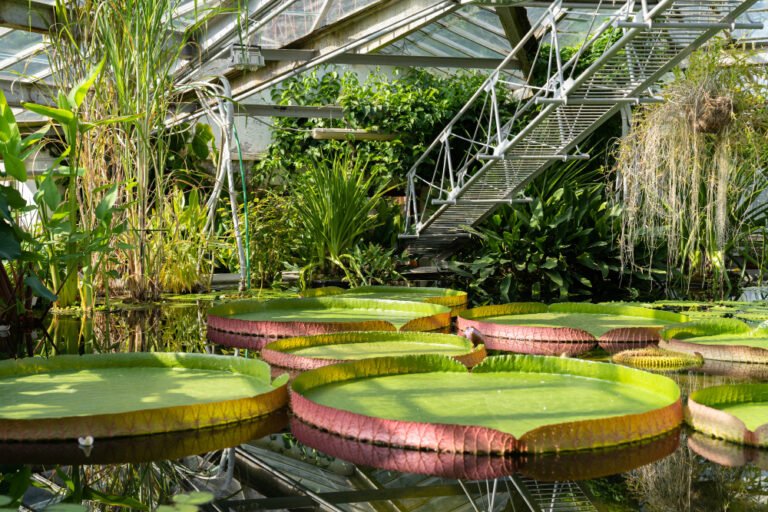Overview
What is a vertical aeroponic system?
A vertical aeroponic system is a type of farming system that allows you to grow plants vertically, maximizing the use of space. Instead of planting in traditional soil, plants are grown in a soil-less environment where their roots are exposed to a misting of nutrient-rich water. This method of cultivation is highly efficient as it eliminates the need for large amounts of soil and reduces water usage. Vertical aeroponic systems are ideal for urban environments where space is limited, and they offer numerous advantages such as increased crop yield, faster growth rates, and easier maintenance. By utilizing vertical space, you can grow a wide range of crops in a small area, making it an innovative and sustainable solution for modern farming.
Advantages of vertical aeroponic systems
Vertical aeroponic systems offer several advantages that make them an ideal choice for maximizing space in your farming setup. Firstly, these systems allow you to grow more plants in a smaller area compared to traditional farming methods. By utilizing vertical space, you can effectively increase your crop yield without needing additional land. Secondly, vertical aeroponic systems provide better control over plant nutrition and water distribution. The plants are grown in a nutrient-rich mist, ensuring that they receive the necessary nutrients for healthy growth. Additionally, the water is recycled within the system, reducing water consumption. Lastly, vertical aeroponic systems are designed to minimize the risk of pests and diseases. The plants are grown in a controlled environment, reducing the chances of infestations. With these advantages, vertical aeroponic systems are revolutionizing modern farming practices and are gaining popularity in countries like India.
How vertical aeroponic systems work
Now that you understand the basics of vertical aeroponic systems, let’s dive deeper into how they actually work. Vertical aeroponic systems use a combination of gravity and misting to provide plants with the necessary nutrients and water. The system consists of vertical towers that hold the plants and a central reservoir that contains the nutrient-rich water. The water is pumped up to the top of the towers and then allowed to flow down through the roots of the plants. As the water flows down, it is misted onto the roots, providing them with the necessary moisture and nutrients. This continuous cycle ensures that the plants receive a constant supply of water and nutrients, allowing them to grow efficiently in a vertical space.
One of the key advantages of vertical aeroponic systems is their ability to maximize space. With traditional farming methods, a large amount of space is required to grow crops horizontally. However, with vertical aeroponic systems, crops can be grown vertically, allowing for more efficient use of space. This is especially important in urban areas where land is limited. Additionally, vertical aeroponic systems can be used in a variety of environments, including indoor spaces, making them a versatile option for farmers.
Vertical aeroponic systems also have the potential to meet the growing global demand for vertical farming. As the world’s population continues to increase, there is a need for more sustainable and efficient farming methods. Vertical aeroponic systems offer a solution by allowing farmers to grow crops in a smaller footprint while still producing high yields. This not only helps to conserve land but also reduces the need for pesticides and herbicides, making it an environmentally friendly choice.
In conclusion, vertical aeroponic systems are a innovative and efficient way to maximize space and meet the global demand for vertical farming. With their ability to grow crops vertically and their potential for high yields, these systems have a promising future in the field of agriculture. Whether it’s in urban areas or indoor spaces, vertical aeroponic systems offer a sustainable and effective solution for farmers. So why not give it a try and see the benefits for yourself?
Design and Setup

Choosing the right location
When choosing the right location for your vertical aeroponic system, there are a few factors to consider. First, you’ll want to find a space that receives ample sunlight throughout the day. This will ensure that your plants receive the necessary amount of light for photosynthesis. Additionally, it’s important to select a location that is easily accessible for maintenance and harvesting. Picking the optimal CEA setup is crucial to maximize space and efficiency. Consider the size and layout of your space, as well as the types of plants you plan to grow. By carefully selecting the right location, you can create an ideal environment for your vertical aeroponic system.
Selecting the appropriate vertical structure
When it comes to choosing the right vertical structure for your aeroponic system, there are a few factors to consider. First, think about the available space you have. If you have a small patio, you might want to opt for a compact vertical structure that can fit in tight spaces. On the other hand, if you have a larger area, you can consider a taller vertical garden that allows for more plant growth. Additionally, consider the materials used for the structure. Look for a sturdy and durable material that can withstand outdoor conditions. Finally, think about the design and aesthetics. Choose a vertical structure that complements your overall garden design and adds visual appeal. By selecting the appropriate vertical structure, you can create a beautiful and functional vertical garden for your patio.
Setting up the aeroponic system
Once you have chosen the appropriate location and selected the right vertical structure for your aeroponic system, it’s time to set it up. Start by assembling the components of the system, including the reservoir, pump, misting nozzles, and growing trays. Make sure to follow the manufacturer’s instructions for proper installation. Next, fill the reservoir with nutrient-rich water and adjust the pH level to the recommended range. Attach the misting nozzles to the pump and position them above the growing trays. The misting nozzles will deliver a fine mist of water and nutrients to the plant roots. Finally, place the plants in the growing trays, ensuring that the roots are in contact with the misting nozzles. Regularly monitor the system’s water level, pH, and nutrient concentration to ensure optimal plant growth and health.
Plant Selection and Care

Choosing suitable plants for vertical aeroponic systems
When selecting plants for your vertical aeroponic system, it’s important to consider their suitability for this unique growing method. NASA indoor farming research has shown that certain plants thrive in aeroponic systems, while others may not adapt as well. Look for plants that have a strong root system and can withstand the misting and nutrient-rich environment. Some popular choices for vertical aeroponic systems include lettuce, herbs, strawberries, and tomatoes. These plants are not only well-suited for aeroponic growing but also provide a bountiful harvest in limited space. Remember to provide proper nutrition and water to ensure the health and productivity of your plants.
Providing proper nutrition and water
Once you have chosen suitable plants for your vertical aeroponic system, it is important to provide them with proper nutrition and water. Nutrition is essential for the growth and development of plants, and in a vertical aeroponic system, it can be delivered through a nutrient-rich solution. This solution is circulated through the system, providing the plants with the necessary nutrients they need to thrive. Water is also crucial for the health of the plants, and in a vertical aeroponic system, it is supplied in a controlled manner. The system ensures that the plants receive the right amount of water, preventing overwatering or underwatering. By providing proper nutrition and water, you are giving your plants the best chance to grow and flourish in your vertical aeroponic system.
Managing pests and diseases
To ensure the health and productivity of your plants in a vertical aeroponic system, it is important to effectively manage pests and diseases. Pests such as aphids, mites, and whiteflies can damage your plants and reduce their growth. Diseases like powdery mildew and root rot can also pose a threat to your plants’ health. Here are some tips to help you manage pests and diseases in your vertical aeroponic system:
- Monitor your plants regularly for any signs of pests or diseases.
- Remove any infected or infested plants immediately to prevent the spread of pests or diseases.
- Use natural pest control methods such as introducing beneficial insects or using organic pest control products.
- Maintain proper hygiene in your system by regularly cleaning and sterilizing the equipment.
By effectively managing pests and diseases, you can ensure that your plants thrive and maximize the space in your vertical aeroponic system.
Conclusion

Benefits of maximizing space with vertical aeroponic systems
If you’re passionate about organic gardening, vertical aeroponic systems are a game-changer. These innovative systems allow you to grow a wide variety of plants in a small space, making them perfect for urban environments or limited backyard areas. With vertical aeroponic systems, you can maximize your space and increase your plant yield. By providing plants with a nutrient-rich mist, these systems promote faster growth and healthier plants. Additionally, vertical aeroponic systems require less water compared to traditional gardening methods, making them more sustainable and environmentally friendly. So, if you want to make the most of your space and enjoy the benefits of organic gardening, consider incorporating a vertical aeroponic system into your setup.
Future prospects of vertical aeroponic farming
As you look to the future of vertical aeroponic farming, exciting possibilities emerge. One of the most promising applications is in sustainable agriculture for space exploration. Vertical aeroponic systems provide efficient and space-saving solutions for growing food in environments with limited resources. NASA, for example, has been exploring the use of these systems for Artemis Missions to the Moon. By harnessing the power of aeroponics, astronauts could cultivate fresh produce during their missions, ensuring a sustainable food supply. This innovative approach to farming holds great potential for supporting long-duration space missions and could pave the way for self-sufficient colonies on other celestial bodies.
Final thoughts
In conclusion, vertical aeroponic systems offer a revolutionary way to maximize space and increase crop yields. By utilizing innovative land management techniques, these systems allow you to grow a wide variety of plants in a small footprint. With the ability to provide proper nutrition and water, as well as manage pests and diseases, vertical aeroponic systems offer a sustainable and efficient solution for urban farming. The future prospects of vertical aeroponic farming are promising, as more and more people recognize the benefits of this method. So, if you’re looking to make the most of limited space and grow your own fresh produce, consider implementing a vertical aeroponic system. It’s a game-changer for urban gardening!
In conclusion, Grow Plant Ponics offers a wide range of products and recommendations for all your gardening needs. Whether you’re a beginner or an experienced gardener, our featured articles provide valuable insights and tips to help you achieve success in your gardening endeavors. Consider adding popular *ponics brands to your collection for even better results. Visit our website, Home – Grow Plant Ponics, to explore our favorites and find the perfect products for your garden. Start growing with Grow Plant Ponics today!







